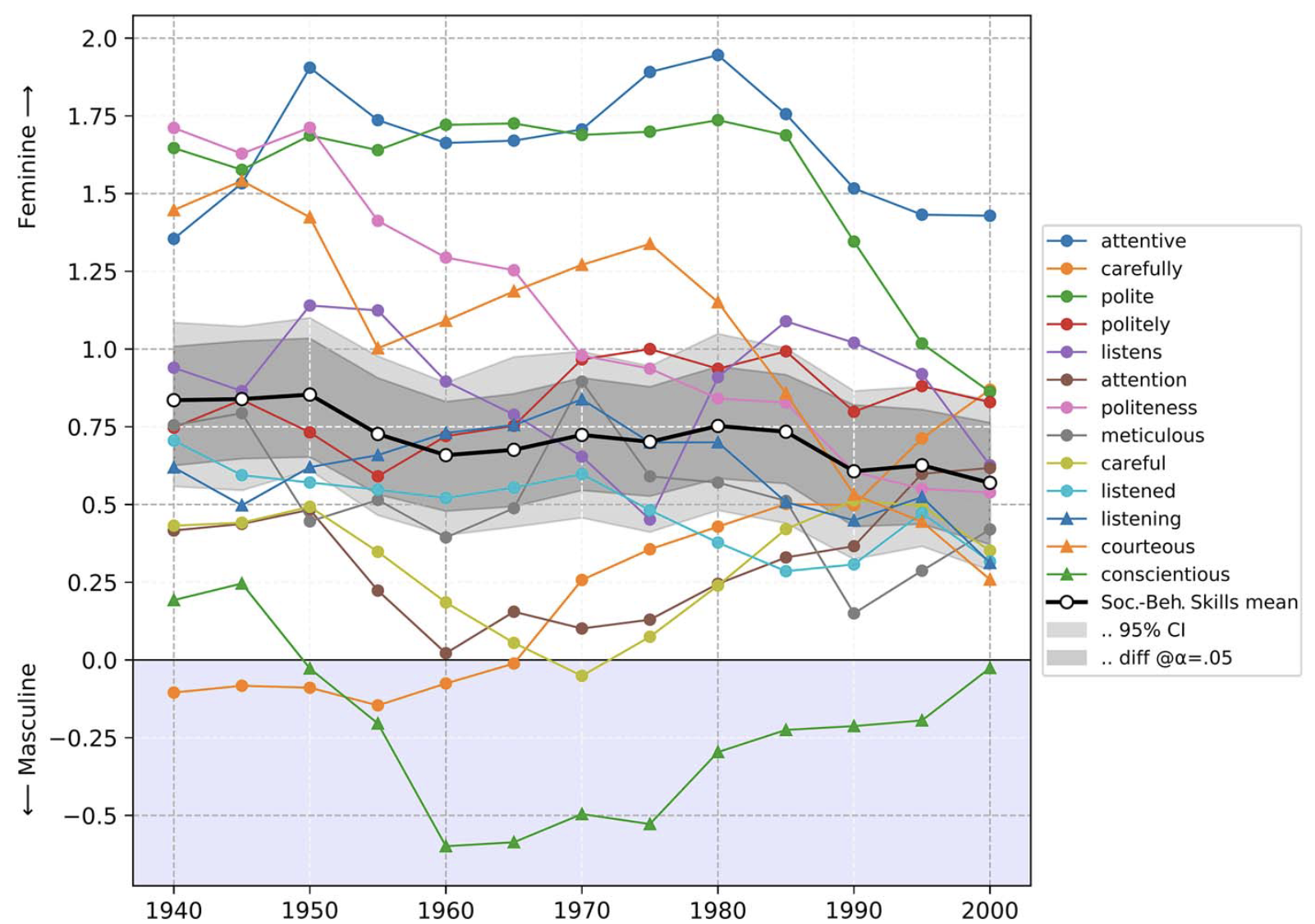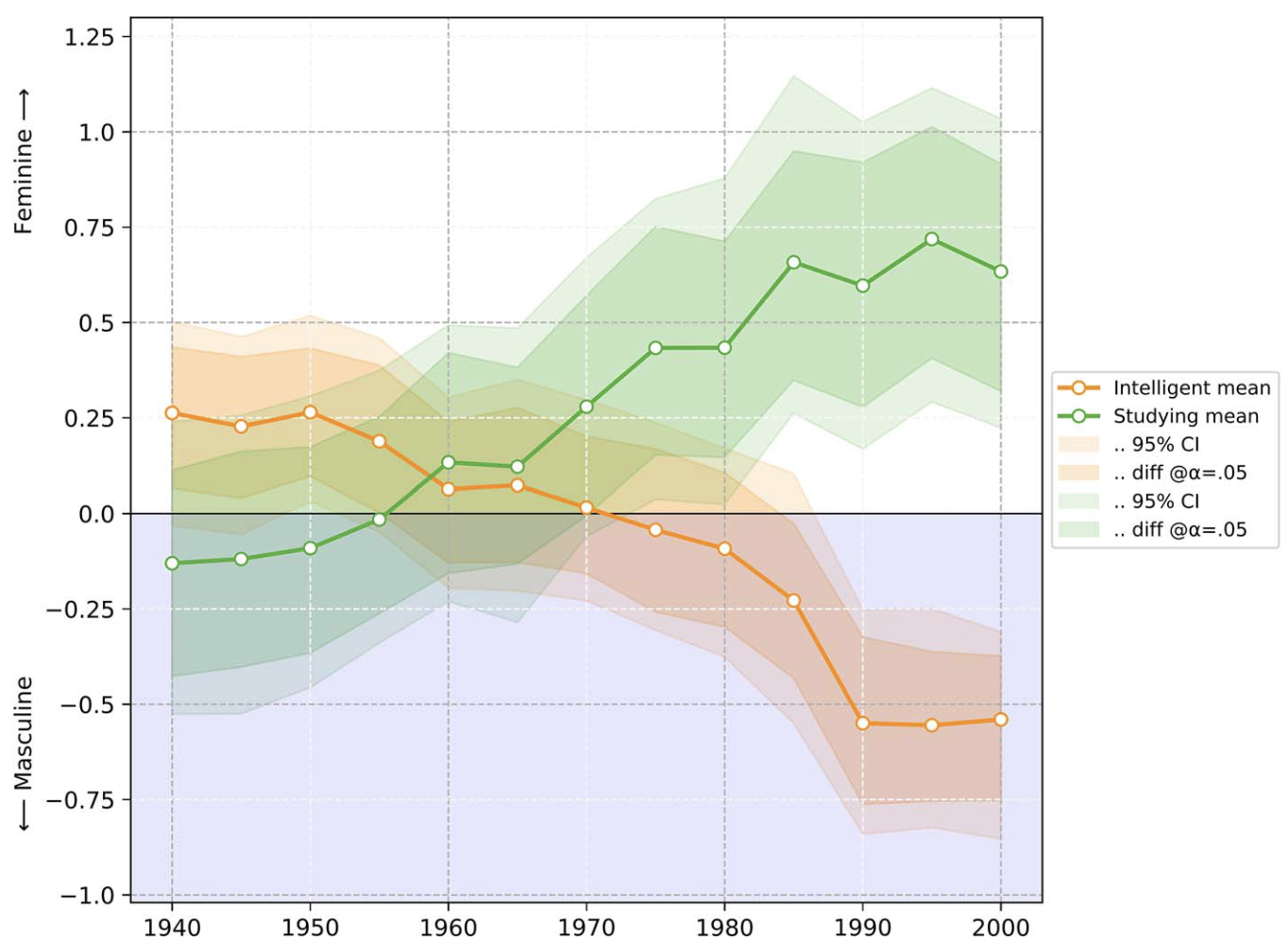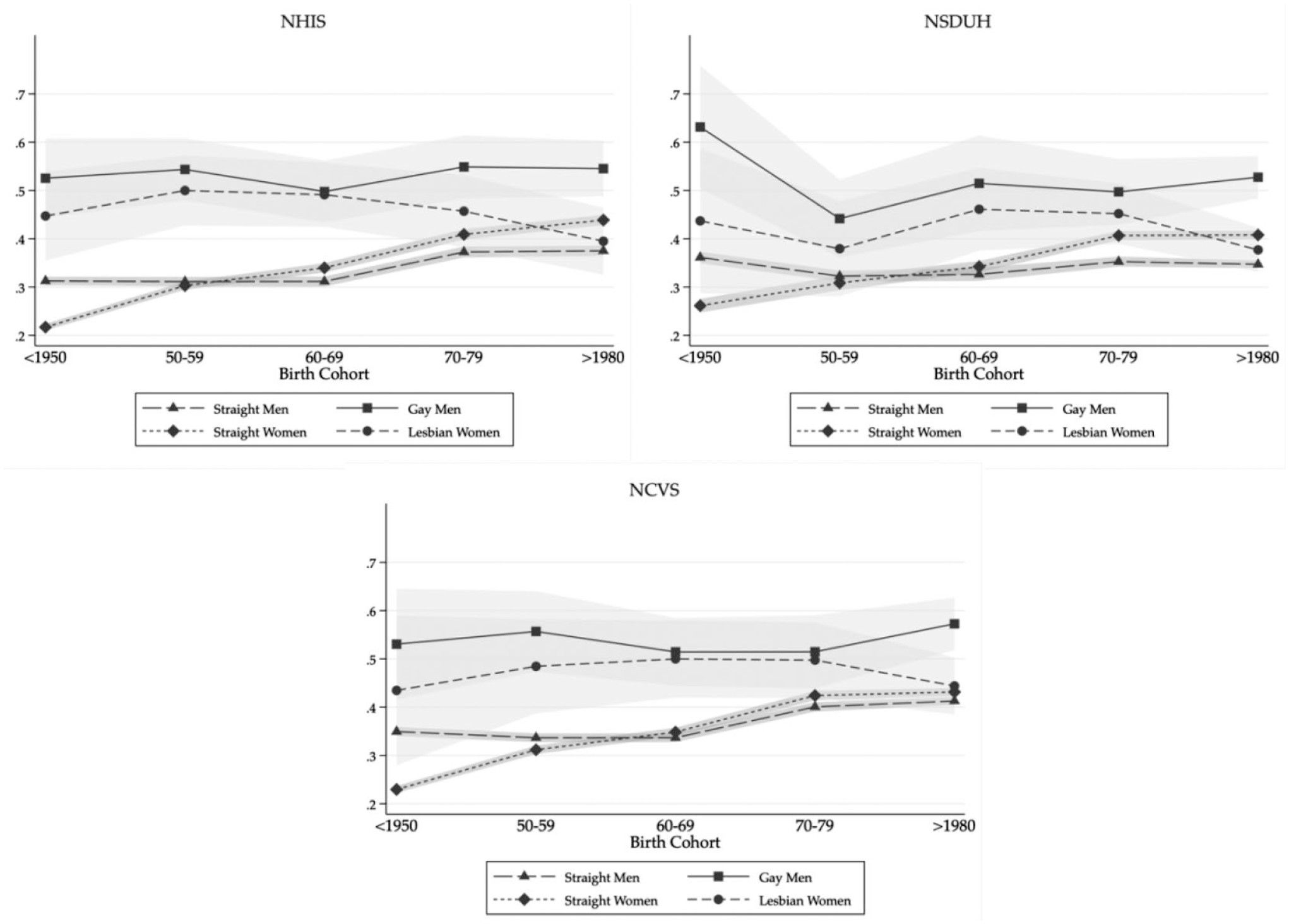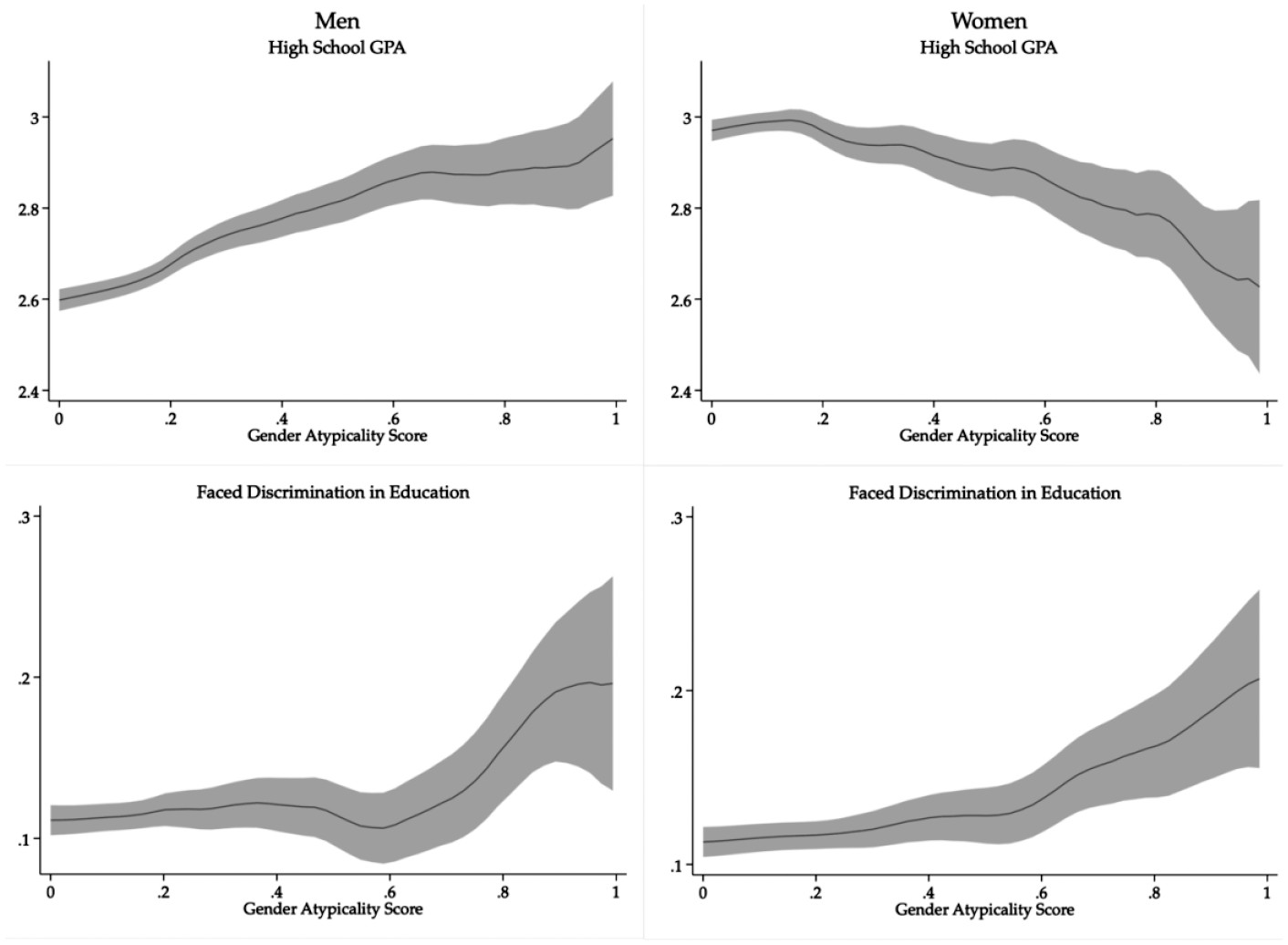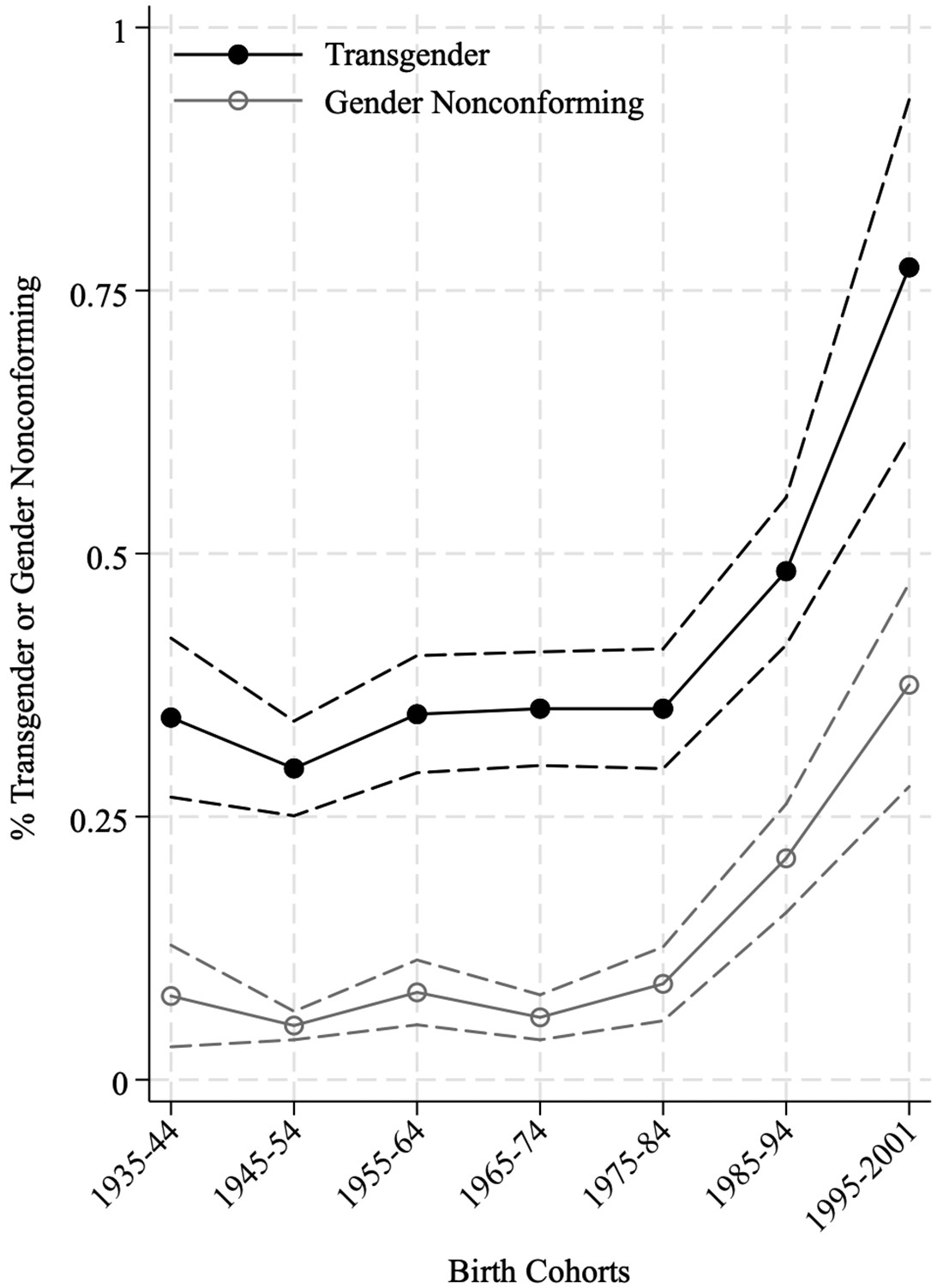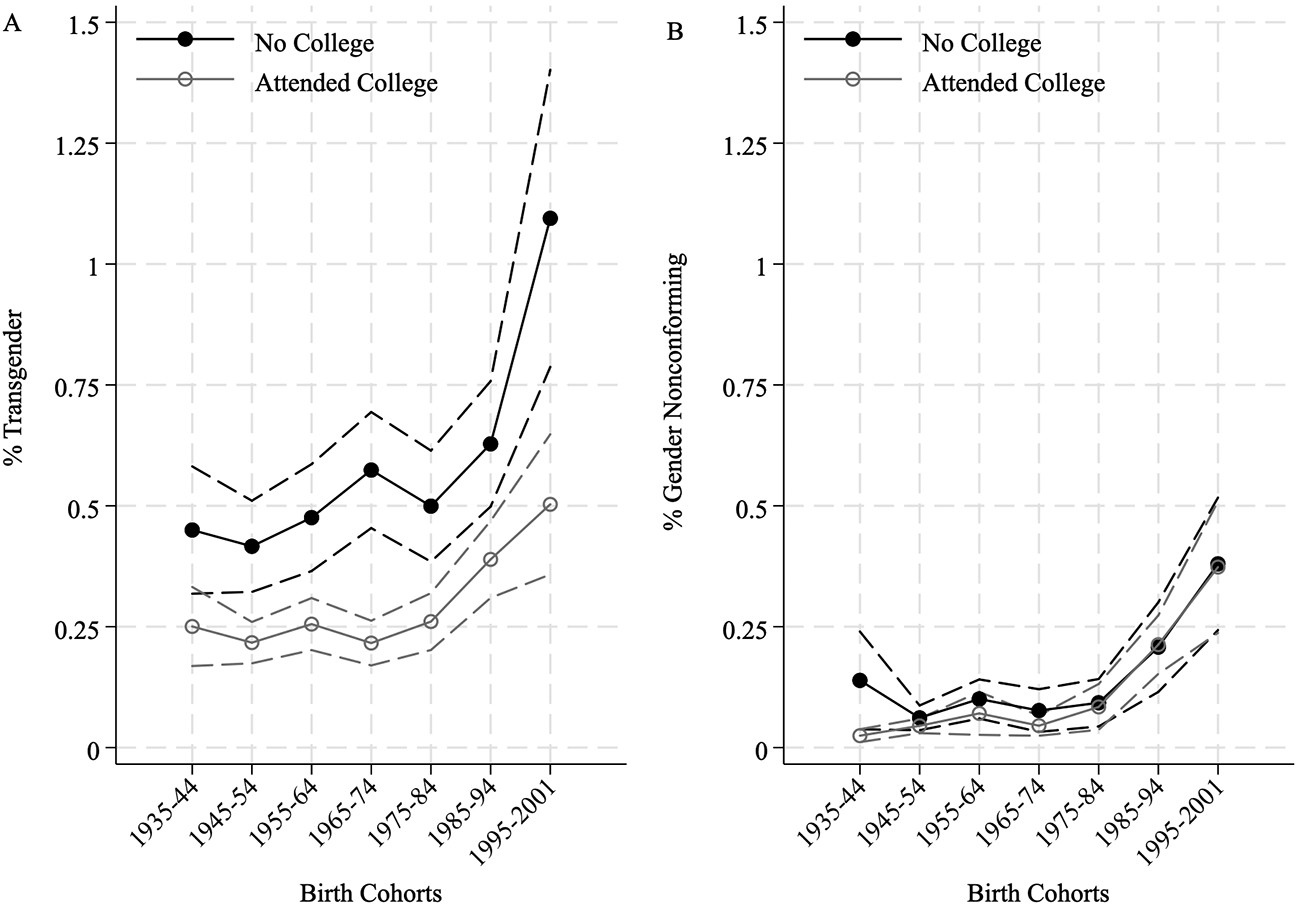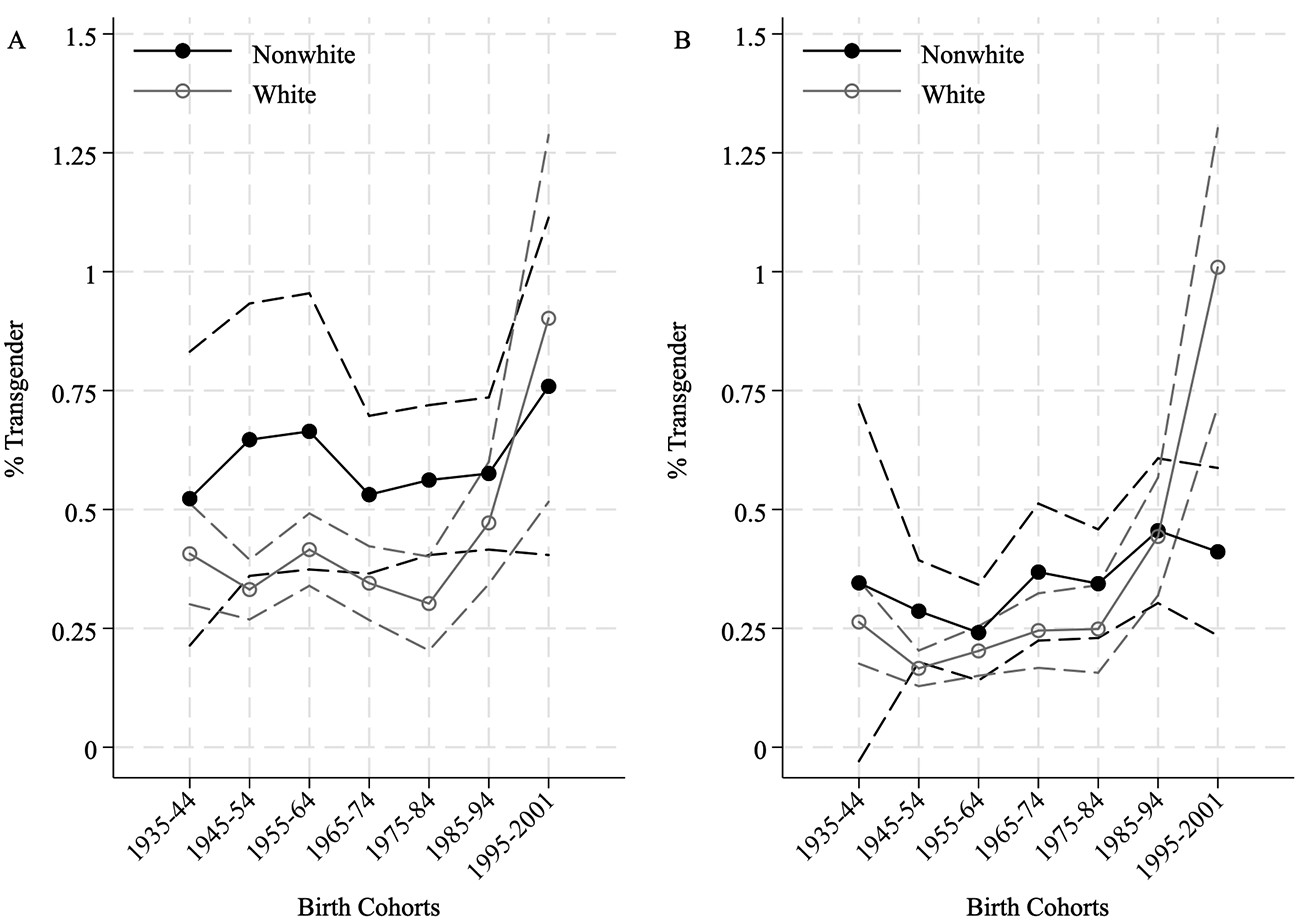Week 7
Gender and Sexuality
SOCI 269
Module II Continues–
March 11th
Looking Forward
Congratulations on wrapping up the first assignment for this class!
You will receive grades and comments towards
the end of spring break.
Looking Forward
I will be posting instructions for your midterm assignment—due by 8:00 PM on April 4th—towards the end of this week.
Gender Stereotypes and Education in Print Media
The Entry Point
Despite the wealth of recent work illustrating the importance of gender stereotypes for academic outcomes, we know little about whether and how these stereotypes changed as gender differences in educational attainment drastically transformed since the 1940s.
(Boutyline, Arseniev-Koehler, and Cornell 2023:264, EMPHASIS ADDED)
The Entry Point
While men reached higher levels of education than women for much of the 20th century, in recent decades this gender gap reversed, with women’s educational attainment increasingly surpassing men’s … These changes in the educational landscape present a rare opportunity to examine how stereotypes change alongside the reversal of a core pattern of stratification.
(Boutyline et al. 2023:264, EMPHASIS ADDED)
Topline Findings
We examined six sets of gender associations that prior work linked to educational outcomes. We found that the stereotypes of socio-behavioral skills and problem behaviors remained unchanged since the middle of the 20th century. The other four stereotypes underwent dramatic changes, with schooling and school effort gaining substantial associations with femininity, and intelligence and unintelligence with masculinity.
(Boutyline et al. 2023:278, EMPHASIS ADDED)
Topline Findings
Figure 3 from Boutyline and colleagues (2023).
Topline Findings
Figure 8 from Boutyline and colleagues (2023).
Group Exercise I
Meaning in Words
In groups of 2-3, discuss the following items—
How does social role theory help orient the authors’ analyses?
Why do the authors think that some gendered stereotypes have endured while others have acquired new gendered valences?
How did the authors test their claims in the empirical arena? This does not, of course, have to be technically “correct.”
Money, Birth, Gender
The Central Puzzle
A Question
In Money, Birth, and Gender, what are Machado and Jaspers (2023)trying to make sense of?
The Central Puzzle
Why earnings trajectories following parenthood are unequal
among different-sex couples.
“A substantial body of research shows that the birth of a child increases inequality within different-sex couples, as mothers bear the brunt of unpaid work and face penalties in the labor market, whereas fathers’ careers are barely affected and might even benefit from a premium.”
(Machado and Jaspers 2023:429, EMPHASIS ADDED)
Another Question
What explains these disparities?Potential Mechanisms
Money
Birth
Gender
Potential Mechanisms
[F]athers have, on average, higher pre-parenthood earnings than mothers, so the gender divergence in earnings trajectories might be due to couples maximizing their joint income by “efficiently” specializing, that is, having the partner who makes less money do a larger share of unpaid work.
(Machado and Jaspers 2023:429, EMPHASIS ADDED)
The biological circumstances of childbearing might provide practical and symbolic bases for the unequal work–care practices that shape diverging earnings trajectories.
(Machado and Jaspers 2023:429–30, EMPHASIS ADDED)
[T]he increase in inequality might result from couples performing and affirming gender differences through the division of paid and unpaid labor.
(Machado and Jaspers 2023:430, EMPHASIS ADDED)
In other words, couples may be doing gender.
Click for More Context
According to this theory … [w]omen … spend more time on housework and less time on paid labor as an act of “doing gender”: women, as well as the broader society, view domestic labor as an act that affirms femininity, and acting in accordance with gender norms comes with the rewards of fitting in.
(Jaspers, Mazrekaj, and Machado 2024:519, EMPHASIS ADDED)
Group Exercise II
Potential Mechanisms
In groups of 2-3, discuss why Machado and Jaspers (2023) posit that money, birth and gender represent three “inequality-generating mechanisms” that are, in principle, difficult
to empirically disentangle.
Then, identify how the authors use variation in couple type to isolate how each proposed mechanism comes to bear on within-couple
inequality following parenthood.
Finally, discuss what the authors find—and, in a broad sense, how they scrutnize competing hypotheses.
Gender and Sexuality II–
March 13th
A Brief Update
Instructions for your midterm assignment—due by 8:00 PM on April 4th—will be available tomorrow morning.
Group Exercise III
Abortion, Abortion Access and Women’s Socioeconomic Futures
In groups of 2-3, put Machado and Jaspers’ (2023) paper on money, birth and gender into dialogue with Everett and Taylor (2024) article on abortion and women’s socioeconomic futures.
Then, discuss how Everett and Taylor’s (2024) motivate (or justify the sociological significance of) their analyses, before mapping
how they test their guiding assumptions.
The Education of Lesbian, Gay, and Bisexual America
Setting the Stage
The “rise of women” in education is among the central demographic transformations of the past half century … [T]he “new gender gap” in education is defined primarily with reference to “boys’ notorious underperformance” … This “problem with boys” has attracted the attention of scholars, policymakers, and the popular press.
(Mittleman 2022:303, EMPHASIS ADDED)
Setting the Stage
In explaining these patterns, sociologists have emphasized the social dynamics of gender over and above the purported dictates of sex. The gender gap, sociologists show, is not an immutable fact of biology; it is a contingent product of students’ social positions and social contexts. To illustrate this fact, stratification research has uncovered considerable heterogeneity in men’s and women’s academic outcomes … Within this body of research, one central axis of inequality has gone largely unobserved: sexuality.
(Mittleman 2022:304, EMPHASIS ADDED)
The Key Findings
Across datasets and outcomes, I find consistent evidence that sexuality is a highly consequential axis of academic inequality, albeit in ways that vary sharply by sex. As a whole, my results reveal two core demographic facts. First, “the rise of women” should be understood more precisely as the rise of straight women. Second, “the problem with boys” obscures one group with rather remarkable levels of academic success: gay boys.
(Mittleman 2022:304, EMPHASIS ADDED)
The Key Findings
Figure 5 from Mittleman (2022).
The Key Findings
Figure 8 from Mittleman (2022).
Group Exercise IV
Making Sense of the Results
In groups of 2-3, discuss how Mittleman (2022) invokes ideas related to the asymmetric gender revolution, masculinities in the classroom, femininity premiums and bad girl penalties (among other theoretical frameworks) to motivate his analyses.
Then, discuss what the gender predictive approach entails. How does Mittleman (2022) use this approach to adjudicate his central claims?
Finally, link Mittleman’s (2022) findings to some of the papers
we reviewed on Tuesday.
Transgender Tipping Point?
The Evolving Context
While assessments made by popular media may not always map accurately to periods of social change, historians, sociologists, and other scholars in transgender studies have tended to agree that transgender visibility and civil rights activism increased dramatically at some point in the mid-2010s.
(Lagos 2022:95, EMPHASIS ADDED)
The Evolving Context
This potential change in the distribution of gender itself may also intersect with the unequal distributions of outcomes and opportunities along other social dimensions. High-profile developments in transgender visibility and rights associated with the transgender tipping point have had uneven social salience along lines of race/ethnicity and class … Furthermore, there is uncertainty about whether the overall gains associated with this potentially singular tipping point will continue to accumulate, stall, or be rolled back due to changing political contingencies.
(Lagos 2022:95, EMPHASIS ADDED)
Select Findings
Figure 2 from Lagos (2022).
Select Findings
Figure 3 from Lagos (2022).
Select Findings
Figure 5 from Lagos (2022).
Select Findings
Figure 6 from Lagos (2022).
Group Exercise V
Biographical Availability
In new groups, discuss what Lagos (2022) means by biographical availability. Having sketched a rough definition, consider how our current political reality might correspond with the availability or unavailability of transgender and nonconforming modes of identification.
Enjoy the Break!
References
Note: Scroll to access the entire bibliography

